 Paraguay : Safety by City
Paraguay : Safety by City
Paraguay doesn’t beg for your attention; it rewards the curious.
Landlocked in the heart of South America, it’s wedged between Brazil, Argentina, and Bolivia, but it feels like its own world entirely.
Unlike its flashier neighbors, Paraguay has stayed off the typical tourist trail, which is precisely what makes it intriguing.
In 2024, 2.2 million people visited, and about half of those were making a day trip from a bordering country.
Its history is marked by resilience—surviving one of the bloodiest wars in the Americas and decades of dictatorship, yet preserving its unique bilingual culture (Spanish and Guaraní) and deep-rooted traditions.
For travelers, Paraguay offers a split-screen experience.
To the east, it’s all lush subtropical forests, rivers, and red-earth farmland.
To the west lies the Chaco, a rugged, wild expanse home to elusive wildlife and Mennonite communities.
Along the Paraguay River, colonial towns, Jesuit ruins, and sleepy fishing villages sit quietly, waiting to be explored.
The capital, Asunción, offers a gritty mix of history, politics, and growing creative energy.
It’s not polished—and that’s the point.
If you’re looking for authenticity over amenities and have a taste for places that haven’t been Instagrammed to death, Paraguay delivers.
Warnings & Dangers in Paraguay

OVERALL RISK: LOW
Paraguay is generally safe for travelers, with a low overall risk if you stick to cities and tourist areas. Most visits are uneventful, but crime does exist, especially in poorer neighborhoods or border regions. Common sense goes a long way.

TRANSPORT & TAXIS RISK: MEDIUM
Transport comes with a medium risk. Buses are cheap but often poorly maintained and targeted by pickpockets. Taxis don’t always use meters, and rideshare apps like Bolt or inDriver are safer bets in major cities. If you're renting a car, drive cautiously—road conditions vary, and locals don’t always follow the rules.

PICKPOCKETS RISK: MEDIUM
Pickpocketing carries a medium risk in Paraguay, especially in crowded spots like markets, bus terminals, or festivals. It’s more opportunistic than aggressive. Wear a crossbody bag, keep your phone out of your back pocket, and be extra alert around Asunción and Ciudad del Este. Those are hotspots for petty theft.

NATURAL DISASTERS RISK: LOW
Paraguay has a low risk of natural disasters compared to its neighbors. There are no active volcanoes or major earthquake zones, but seasonal flooding can happen, especially in rural or riverside areas. Check weather updates during the rainy season (roughly October to April) if you're headed out of the city.

MUGGING RISK: MEDIUM
Mugging is a medium risk in urban areas after dark. Tourists aren’t usually explicitly targeted, but it happens, especially if you’re walking alone, distracted, or in the wrong neighborhood. Avoid shortcuts through parks or side streets at night, and take a cab or rideshare instead of walking home late. Please note our section on places to avoid in Paraguay.

TERRORISM RISK: LOW
Paraguay has a low risk of traditional terrorism, but certain regions—especially near the Tri-Border Area with Brazil and Argentina—have been flagged for organized crime, drug trafficking, and loosely monitored activity by non-state actors. These aren’t typical tourist spots, and travelers are unlikely to be affected, but it’s worth being aware of the underlying tensions.

SCAMS RISK: MEDIUM
Scams carry a medium risk, usually low-tech but annoying. Overcharging taxis, fake tour guides, or counterfeit money are common complaints. In border towns like Ciudad del Este, watch for bait-and-switch electronics deals. Trust your gut—if it feels off, walk away. Always ask for prices upfront and avoid giving out your passport unnecessarily.

WOMEN TRAVELERS RISK: MEDIUM
For solo female travelers, the risk is medium. Most women have a safe trip, but catcalling is common, and cultural norms can feel outdated. Dress modestly outside the city, and be cautious in nightlife scenes. Stick to well-reviewed hotels or hostels, and let someone know your itinerary if going off-grid.

TAP WATER RISK: MEDIUM
Tap water in Paraguay carries a medium risk. While locals may drink it without issue, most visitors should stick to bottled or filtered water to avoid stomach problems. It’s fine for brushing your teeth, but play it safe when it comes to ice, salads, or street food if you have a sensitive system.
Safest Places to Visit in Paraguay
The National Secretariat of Tourism (SENATUR) is Paraguay’s official government agency responsible for promoting and managing tourism in the country.
That group runs the tourism website “visitparaguay.travel.”
Start in Asunción, the capital. While some outer neighborhoods are rougher, the city center and riverside areas offer colonial architecture, museums, and a growing food scene.
For a quieter escape, Areguá—about 30 minutes away—is known for its art galleries, ceramics, and Lake Ypacaraí views.
Heading south, Encarnación is one of Paraguay’s most traveler-friendly cities.
It’s home to the Jesuit Ruins of Trinidad and Jesús, both UNESCO World Heritage Sites, and a clean, walkable riverside beach.
To the northwest, Filadelfia in the Chaco region offers a very different landscape—dry, remote, and full of wildlife.
It’s the gateway to exploring Paraguay’s national parks like Teniente Enciso or Defensores del Chaco, although logistics can be challenging and require planning.
(Do NOT visit these places without a guide!)
In the east, you can visit Ybycuí National Park, which is safe, manageable, and offers waterfalls, trails, and an old iron foundry museum.
It’s not too far from Asunción and gives a taste of Paraguay’s natural side without going too far off-grid.
Places to Avoid in Paraguay
Certain parts of Paraguay are flagged for higher crime or drug trafficking activity.
The U.S. advises increased caution in Alto Paraná, Amambay, Canindeyú, Concepción, and San Pedro due to organized crime and limited police presence.
Canada specifically notes elevated crime in some neighborhoods around Asunción, including Chacarita, Luque, and San Lorenzo.
These areas aren’t off-limits, but if you’re not familiar with the local dynamics, it’s better to steer clear, especially after dark or if you’re solo.
Safety Tips for Traveling to Paraguay
- The national police handle most law enforcement in Paraguay, but response times can be slow, especially outside cities. To call for help, dial 911. Keep in mind: English isn’t widely spoken. If you’re in a bind, ask your hotel to call on your behalf—they’ll usually have better local contacts anyway.
- There’s no national alert app for tourists, so you’ll need to stay in the loop the old-school way—by checking local news or asking hotel staff. If you’re from the U.S., enroll in STEP (Smart Traveler Enrollment Program) to get embassy alerts. It’s not always timely, but it’s better than nothing.
- Paraguay doesn’t require any vaccines to enter, but yellow fever is recommended if you’re coming from a high-risk country. Hepatitis A and B, typhoid, and rabies are worth considering, especially if you’re going rural. Mosquito-borne illnesses like dengue are common, so pack repellent like it’s part of your wardrobe.
- Mosquitoes are the main culprits in Paraguay—dengue fever, chikungunya, and Zika are all present, especially in warmer months. These aren’t fringe concerns; outbreaks happen regularly. While there’s no vaccine for most of them, avoiding bites is your best bet. Wear long sleeves, use repellent, and maybe skip the open-air dinner at dusk.
- The River Paraguay might look tempting on a hot day, but don’t swim in it. Pollution levels are dangerously high in many spots—think industrial runoff, sewage, and trash. Even locals avoid swimming in certain areas. If you’re craving water, find a pool or ask locals where it’s actually safe to dip in.
- Paraguay doesn’t have strong oversight of tour companies, so you’ll need to vet them yourself. Look for guides affiliated with recognized travel networks or that have consistent reviews from travelers, not just locals. Avoid anyone offering cash-only deals or last-minute wilderness treks. If it feels sketchy, it probably is.
- Power outages, water shortages, and fuel disruptions aren’t rare, especially in smaller towns or during extreme weather. It’s not a total dealbreaker, but it can throw off your plans. If you’re staying outside Asunción, ask your host what to expect. Pack a flashlight and bring cash just in case ATMs go down.
- One of the more common street crimes in Paraguay involves robbers on motorcycles. They ride up fast, flash a weapon, and demand your bag or phone before speeding off. It’s usually over in seconds, but keep your stuff close and avoid walking alone with your phone out in lower-traffic areas.
- You can drive in Paraguay with a valid foreign license, but you might regret it. Road signs are inconsistent, drivers are aggressive, and rural roads can turn into mud pits. If you’re used to structure and rules, you’ll find very little of that here. Honestly, unless you’re confident, leave the driving to locals.
- In cities, Paraguayans dress fairly conservatively—nothing extreme, but shorts and crop tops may get you the side-eye outside tourist areas. In the wild, long sleeves and pants aren’t just smart—they’re armor against bugs, sun, and brush. Layers are key. And don’t forget a hat; the sun here doesn’t mess around.
So... How Safe Is Paraguay Really?
Government advisories for Paraguay have mixed reviews.
It’s pretty rare to see differences between how the United States, the United Kingdom, Canada, and Australia rank a risk level.
Generally, countries rank other countries on a four-tiered scale.
Level 1, the lowest, means to use standard precautions.
The highest risk, Level 4, means avoiding all travel.
For Paraguay, here’s how it breaks down.
- United States: Level 1 Exercise Normal Precautions
- Canada: Level 2 Exercise a High Degree of Caution
- Australia: Level 2 Exercise a High Degree of Caution
While the UK doesn’t use the rating scale, the Foreign, Commonwealth and Development Office (FCDO) will usually make a bold statement about avoiding travel or limiting travel if there is a risk level.
Nothing like that is mentioned in the Paraguay advisory.
To avoid leaving too much room for interpretation, here’s what is going on with these advisories.
First, all the governments agree on the same risks for foreign nationals in Paraguay.
It really comes down to the specific regions that are more problematic.
For example, the U.S. does list Paraguay at Level 1, but several departments (regions) within the country are listed at Level 2.
Acting President Pedro Alliana applauded the U.S. Level 1 ranking, stating in May 2025, “This recognition reflects the serious work we have been doing—through our institutions, our security forces, and the daily commitment of our people.”
Don’t get too confident with that information.
Violent crime is increasing across Paraguay while the government is actively trying to stop it.
That could mean a change in risk levels before your trip.
Always check the latest advisories before you plan a trip.
While Level 2 might seem a bit concerning, it’s really not until you get to Levels 3 and 4 that you should reconsider travel.
How Does Paraguay Compare?
| Country | Safety Index |
|---|---|
| Paraguay | 45 |
| Djibouti | 38 |
| Croatia | 83 |
| Mexico | 65 |
| France | 64 |
| Puerto Rico | 34 |
| Somalia | 16 |
| United Kingdom | 77 |
| Peru | 50 |
Useful Information

Visas
Travelers from the U.S., UK, EU, and many South American countries can enter Paraguay visa-free for up to 90 days. Others, including citizens of Canada and Australia, may need a visa or must pay a reciprocity fee on arrival. Always check with Paraguay’s nearest consulate before you go—rules vary widely. Be sure to get a stamp upon entry, or you could end up with a fine on the way out.

Currency
Paraguay uses the guaraní (PYG), and it's a largely cash-based economy. Credit cards are accepted in cities, but in rural areas, you’ll want cash. ATMs are common, but international cards don’t always work. Skip airport exchange booths if you can—better rates are available in town.

Weather
Paraguay has a subtropical climate—hot and humid in the summer (Dec–Feb), cooler and dry in the winter (Jun–Aug). The eastern region gets more rainfall, while the Chaco to the west is drier and more extreme. Pack for heat, but don't assume it'll never get chilly at night.

Airports
Silvio Pettirossi International Airport (ASU), near Asunción, is the main entry point, with flights mostly from other South American countries and occasional long-haul options. Ciudad del Este and Encarnación have smaller airports with limited service. Ground transport from the airport is reliable but not always cheap. Arrange a ride in advance if you can.

Travel Insurance
It’s not required to enter Paraguay, but strongly recommended. Medical facilities in Asunción are decent, but options are limited elsewhere. Travel insurance with emergency medical and evacuation coverage is smart, especially if you're venturing into the Chaco or doing anything adventurous. Some U.S.-based providers may exclude coverage in Paraguay, so read the fine print.
Paraguay Weather Averages (Temperatures)
Average High/Low Temperature
| Temperature / Month | Jan | Feb | Mar | Apr | May | Jun | Jul | Aug | Sep | Oct | Nov | Dec |
|---|---|---|---|---|---|---|---|---|---|---|---|---|
| High °C |
34 | 33 | 32 | 29 | 26 | 23 | 23 | 26 | 29 | 31 | 32 | 33 |
| Low °C |
23 | 23 | 21 | 18 | 15 | 12 | 11 | 13 | 17 | 19 | 21 | 22 |
| High °F |
93 | 91 | 90 | 84 | 79 | 73 | 73 | 79 | 84 | 88 | 90 | 91 |
| Low °F |
73 | 73 | 70 | 64 | 59 | 54 | 52 | 55 | 63 | 66 | 70 | 72 |
Paraguay - Safety by City
| City | Safety Index |
|---|---|
| Asuncion | 69 |

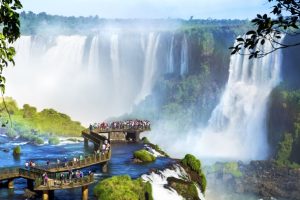

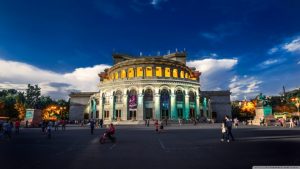

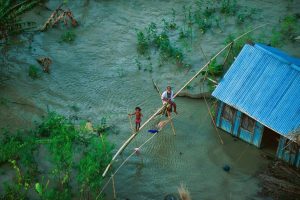

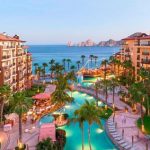
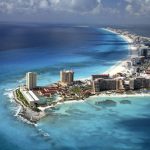
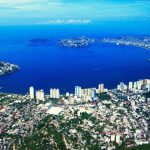
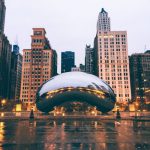
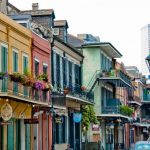
I wish i could go to Paraguay .could you please help . mnadir_shah@yahoo.com my email thanks .
Lovely information .
..
UmMm I’m not sure it’s wise to give your email address on a public site ;-;
Lovely place ❤️
I wish if I could be there!
These days organized crime are taking over. Corruption is everywhere. Police officers are eager to get your money for any reason made up.
Do not recommend to visit the country.